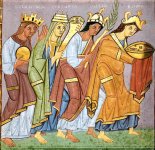ElHorsto
Banned
- Messages
- 1,034
- Reaction score
- 185
- Points
- 0
- Ethnic group
- German
- Y-DNA haplogroup
- Yes
- mtDNA haplogroup
- Yes
no offense taken
my overall opinion is based on the current people I work with or am related to via marriages.
I work with a russian from Socie and a moldovan, both females ( females are overall lighter in skin tone than men, so!!). Both are black haired ( natural ) and one has grey eyes and other pale blue eyes. both tan easily but both loose natural tan colour quickly as well. Both born in their countries, both under 30 years of age, both been in Australia less than 10 years.
Atlantid-Pontid similarity comes to mind.


